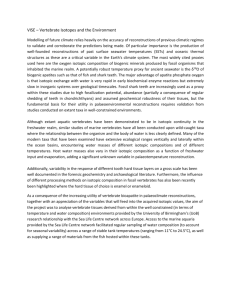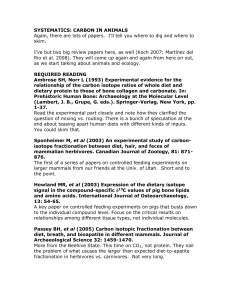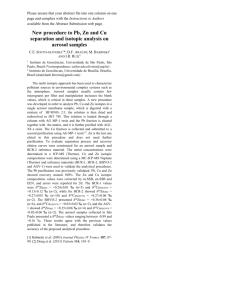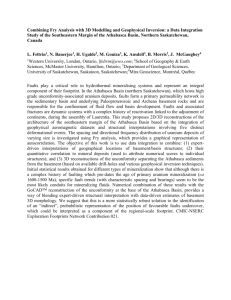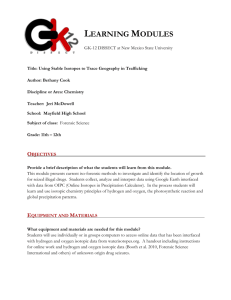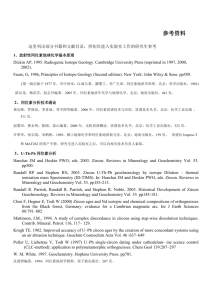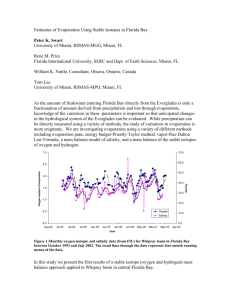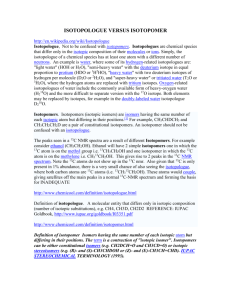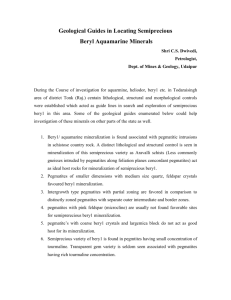Li and B isotopic composition of basement rocks, Dawn Lake area
advertisement
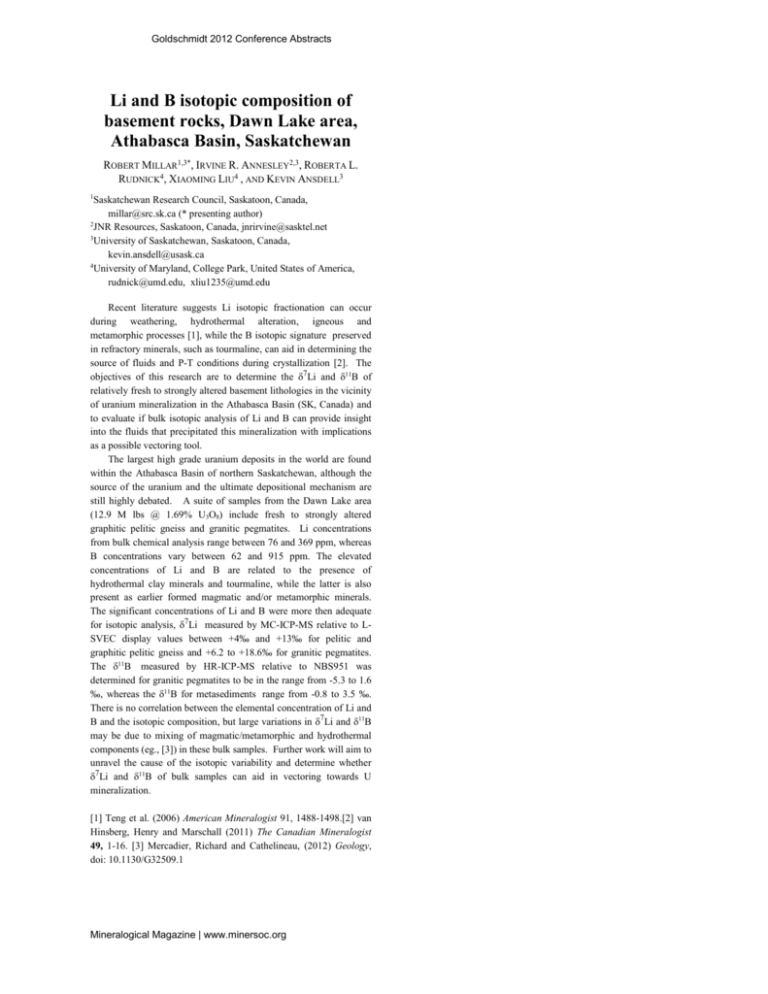
Goldschmidt 2012 Conference Abstracts Li and B isotopic composition of basement rocks, Dawn Lake area, Athabasca Basin, Saskatchewan ROBERT MILLAR1,3*, IRVINE R. ANNESLEY2,3, ROBERTA L. RUDNICK4, XIAOMING LIU4 , AND KEVIN ANSDELL3 1 Saskatchewan Research Council, Saskatoon, Canada, millar@src.sk.ca (* presenting author) 2 JNR Resources, Saskatoon, Canada, jnrirvine@sasktel.net 3 University of Saskatchewan, Saskatoon, Canada, kevin.ansdell@usask.ca 4 University of Maryland, College Park, United States of America, rudnick@umd.edu, xliu1235@umd.edu Recent literature suggests Li isotopic fractionation can occur during weathering, hydrothermal alteration, igneous and metamorphic processes [1], while the B isotopic signature preserved in refractory minerals, such as tourmaline, can aid in determining the source of fluids and P-T conditions during crystallization [2]. The objectives of this research are to determine the 7Li and of relatively fresh to strongly altered basement lithologies in the vicinity of uranium mineralization in the Athabasca Basin (SK, Canada) and to evaluate if bulk isotopic analysis of Li and B can provide insight into the fluids that precipitated this mineralization with implications as a possible vectoring tool. The largest high grade uranium deposits in the world are found within the Athabasca Basin of northern Saskatchewan, although the source of the uranium and the ultimate depositional mechanism are still highly debated. A suite of samples from the Dawn Lake area (12.9 M lbs @ 1.69% U3O8) include fresh to strongly altered graphitic pelitic gneiss and granitic pegmatites. Li concentrations from bulk chemical analysis range between 76 and 369 ppm, whereas B concentrations vary between 62 and 915 ppm. The elevated concentrations of Li and B are related to the presence of hydrothermal clay minerals and tourmaline, while the latter is also present as earlier formed magmatic and/or metamorphic minerals. The significant concentrations of Li and B were more then adequate for isotopic analysis, 7Li measured by MC-ICP-MS relative to LSVEC display values between +4‰ and +13‰ for pelitic and graphitic pelitic gneiss and +6.2 to +18.6‰ for granitic pegmatites. The measured by HR-ICP-MS relative to NBS951 was determined for granitic pegmatites to be in the range from -5.3 to 1.6 ‰, whereas the for metasediments range from -0.8 to 3.5 ‰. There is no correlation between the elemental concentration of Li and B and the isotopic composition, but large variations in 7Li and may be due to mixing of magmatic/metamorphic and hydrothermal components (eg., [3]) in these bulk samples. Further work will aim to unravel the cause of the isotopic variability and determine whether 7Li and of bulk samples can aid in vectoring towards U mineralization. [1] Teng et al. (2006) American Mineralogist 91, 1488-1498.[2] van Hinsberg, Henry and Marschall (2011) The Canadian Mineralogist 49, 1-16. [3] Mercadier, Richard and Cathelineau, (2012) Geology, doi: 10.1130/G32509.1 Mineralogical Magazine | www.minersoc.org


